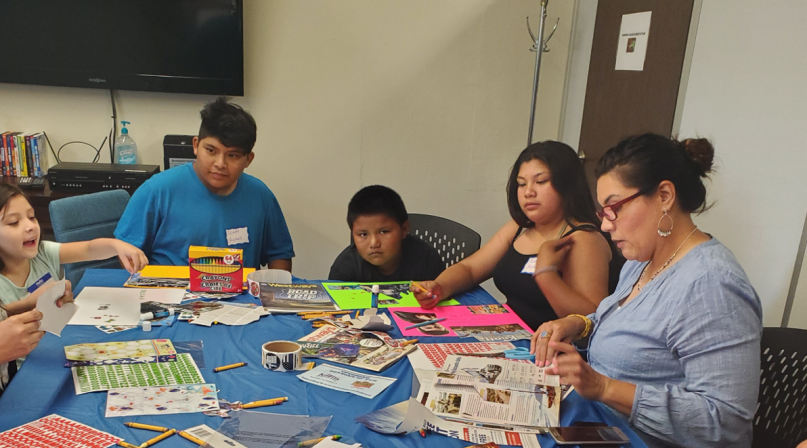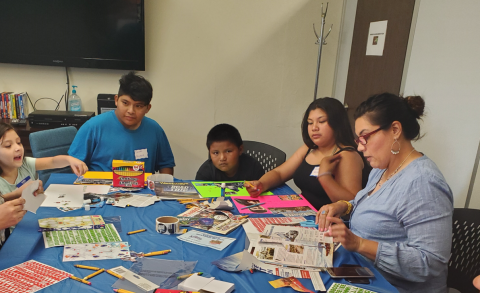Problem:
|
Calls made to the Department of Children and Family Services’ Hotline that do not warrant an investigation have low connection rates to voluntary supports.
|
Solution:
|
Engage with community partners that help connect families to services and prevent them from entering the child-welfare system.
|
A multi-agency, cross-departmental collaboration in Los Angeles County, Calif. has expanded the child-welfare continuum to keep children and families safe.
The Los Angeles County Department of Children and Family Services (DCFS) Child Protection Hotline receives more than 220,000 calls for suspected child abuse or neglect each year.
Not all calls require an investigation, but many families would benefit from community support to prevent them from entering the child-welfare system.
Learn More
Los Angeles County’s Moving Families from the Hotline to a Helpline is the recipient of a Best in Category 2020 NACo Achievement Award in the Children and Youth category.
Does your county have an innovative program to share? Enter the 2021 NACo Achievement awards
Carrie Miller, assistant executive director for the Office of Child Protection, said the department wanted to find a way to help families who have been referred to the hotline, but whose situation didn’t warrant opening an investigation.
“There was a concern that that wasn’t really meeting the best needs of families who certainly don’t need the intensity of services provided by DCFS, but clearly could benefit from something,” she said.
The department launched the Community Prevention Linkage project in 2009 to increase preventative community connections for at-risk families.
Instead of closing the case if an investigation wasn’t necessary, Miller said DCFS would reach out to families to offer community supports such as wellness activities, peer support, parent education, child development programs, employment skills, financial stability and emergency aid as well as non-traditional supports such as yoga, poetry slams, drumming and community gardens.
However, the department found the rate of connecting families to these supports was low with only one in 10 families connected to community services offered by DCFS.
Miller attributed this to a negative reputation of child protective services and the multiple handoffs between DCFS and prevention and aftercare providers.
“There was a lot of resistance in this approach as you could imagine from families in particular who don’t welcome a call from DCFS,” Miller said.
To examine the low acceptance rates for these supports, the county worked to streamline the process using Lean Six Sigma principles which focus on identifying problems and finding solutions.
“We applied a Lean Six Sigma approach which is essentially trying to go deep into discovering what’s at the root of the problem, what’s going on that families aren’t wanting to accept these services and what does that mean so then we can figure out the best solution,” Miller said.
One of the major changes that resulted from the approach was a partnership between DCFS, the Department of Mental Health (DMH) and prevention and aftercare networks.
Instead of families receiving a call from DCFS, prevention and aftercare networks began directly making contact.
“We found almost instantly that we doubled the number of families who are willing to participate and access these services which was terribly exciting because we want to make sure families are getting the services that they need,” Miller said.
The move led to more than 700 families connected to prevention services in one year, tripling the number from 2017.
Additionally, the approach streamlined enrollment wait times for community prevention supports, decreasing waiting periods by nearly 50 percent.
The redesign of the project involved collaboration among the Office of Child Protection, housed in the executive office of the county board of supervisors, DCFS, DMH, the University of Southern California’s School of Social Work, 10 prevention and aftercare networks and the registrar-recorder/county clerk who offered the guidance on the Lean Six Sigma methods.
“It created a wonderful partnership and I think a deeper understanding from both the community partner side and the county agency side of what each other’s strengths are and what each partner brings to the table,” Miller said.
The redesign involved the department shifting roles, establishing multidisciplinary teams, simplifying the work process, retraining all hotline staff and standardizing data collection and tracking.
“I think one of the most important lessons learned was trusting, partnering and working with your community providers,” Miller said. “Stepping outside of your own way of thinking and try to listen and hear from others about other ways of doing things that really are at the best interest and heart of families.”



